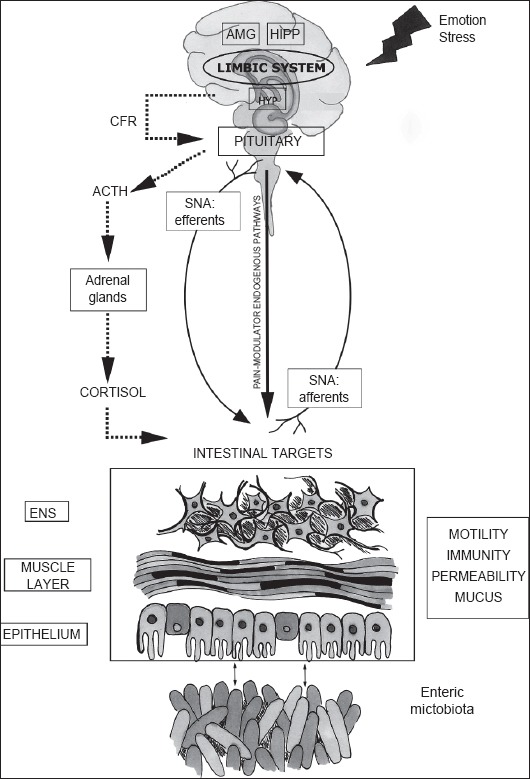Marilia Carabotti, Annunziata Scirocco, Carola Severi, Carola Severi. The gut-brain axis: interactions between enteric microbiota, central and enteric nervous systems. Ann Gastroenterol 2015 Apr-Jun;28(2):203-209.
Figure 1.

Microbiome gut-brain axis structure
The central nervous system and in particular hypothalamic pituitary adrenal (HPA) axis (in dashed line) can be activated in response to environmental factors, such as emotion or stress. HPA is finalized to cortisol release and is driven by a complex interaction between amygdala (AMG), hippocampus (HIPP), and hypothalamus (HYP), constituting the limbic system. HYP secretion of the corticotropin-releasing factor (CRF) stimulates adrenocorticotropic hormone (ACTH) secretion from pituitary gland that, in turn, leads to cortisol release from the adrenal glands. In parallel, central nervous system communicate along both afferent and efferent autonomic pathways (SNA) with different intestinal targets such as enteric nervous system (ENS), muscle layers and gut mucosa, modulating motility, immunity, permeability and secretion of mucus. The enteric microbiota has a bidirectional communication with these intestinal targets, modulating gastrointestinal functions and being itself modulated by brain-gut interactions


